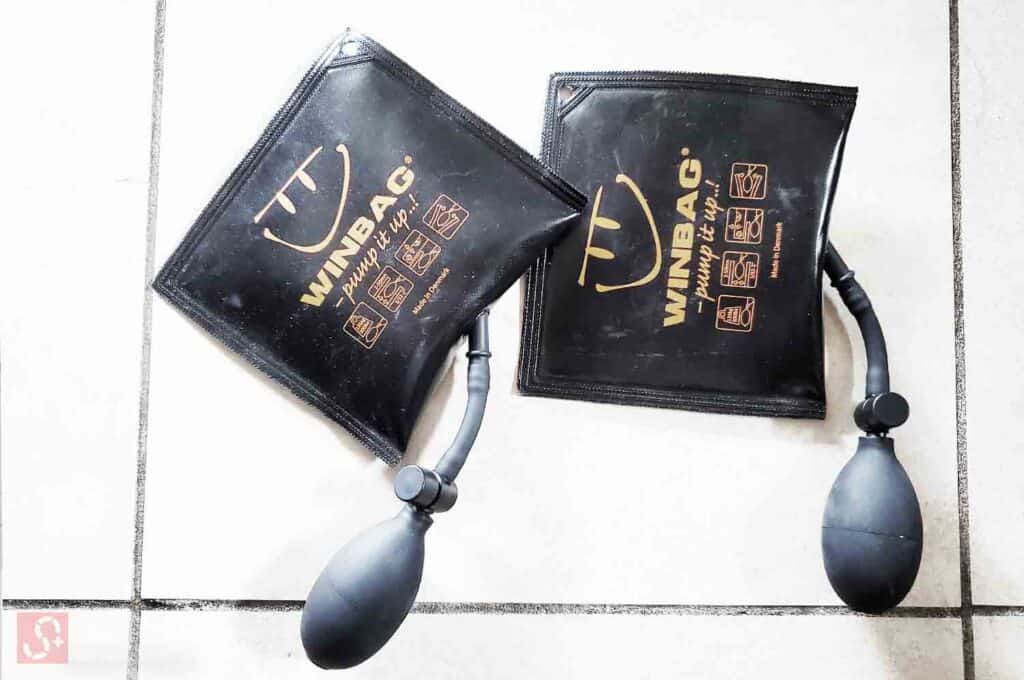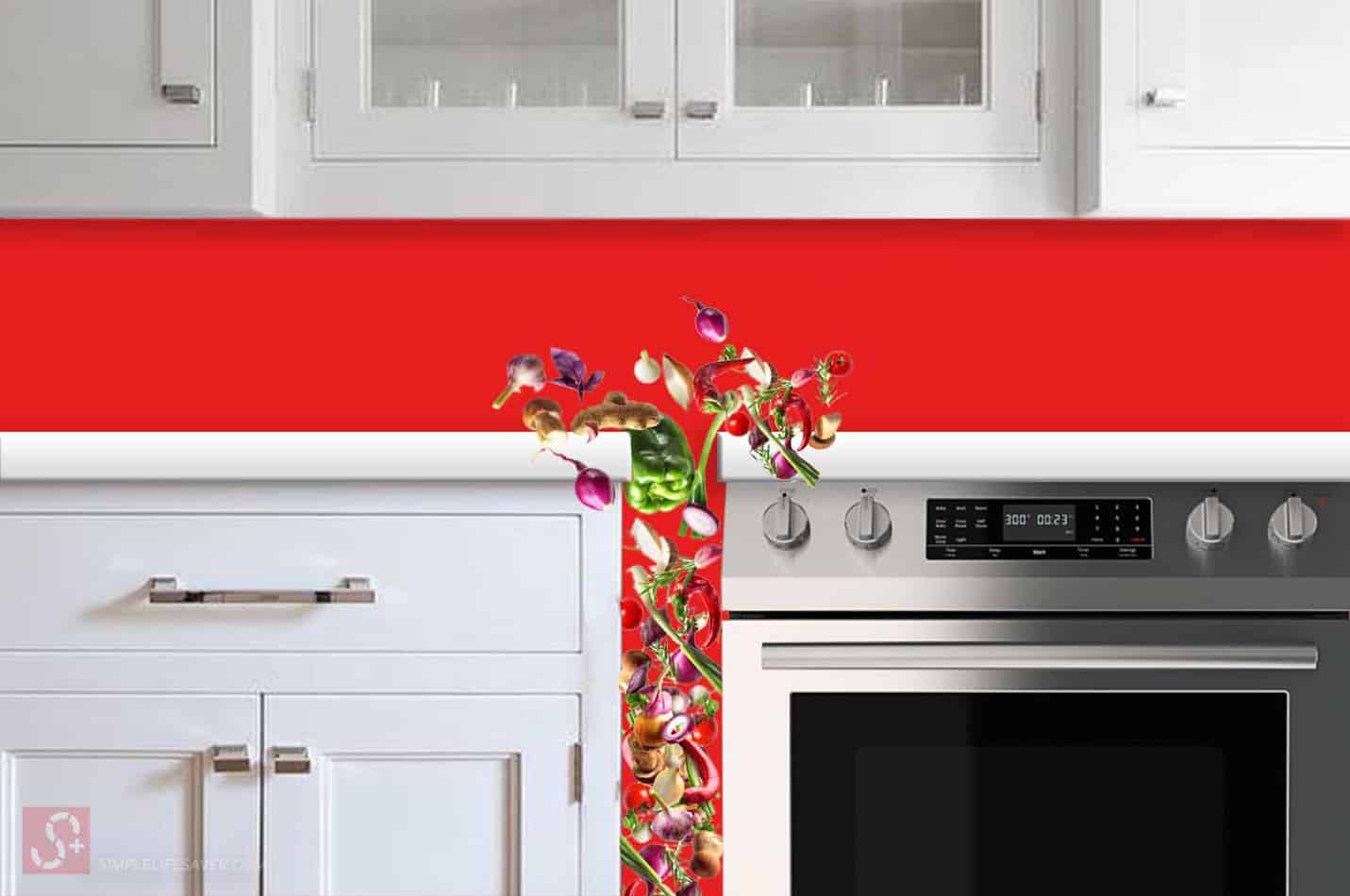Ever move your stove out of its place, and as you look down, you see the nightmarish remains of years worth of meals accumulated on the floor?
This can be pretty embarrassing, especially if you have delivery men installing your new stove.
You rush over to start sweeping it up, and you didn’t expect it to be that bad. It can get quite nasty down there if you’re constantly cooking.
That gap can be a magnet for things like pasta sauce.
Just imagine all that red sauce seeping down the gap like a tub drain.
The more food that is passed from between your range and countertop, the more likely it will slip down that gap and end up on the floor.
Don’t be surprised if you even see solidified grease running down the side of your range. All this can even lead to pests having a full-time food supply in your home.
Don’t feel down; it happens to the best of us!
The food that slips down the gap can even be the origin of a bad smell in your home that you can’t locate. In a recent article, I discuss how to control wondering smells in a kitchen.
Lucky for you, I have the perfect solution to permanently stop food from falling down the gap between your range and countertop.
Using a heat-resistant flexible silicone T-shaped gap filler will stop all food from falling between the gap of your range and countertop.
How do you fill the gap between an oven and countertop?
I know I gave you the quick solution above, but lucky for you, I always provide more than one way to skin a cat.
Using the amazon bought heat-resistant flexible silicone T-shaped gap filler will 100% do the trick.
But I have another stylish solution. In my kitchen, I use a stylish-looking floor T-moulding to fill the gap.
You might be asking yourself what the heck is a T-molding. Commonly used for flooring, It is a long T-shaped rod that sits in the small gap between two different floor types.
This simple repurposed item prevents grease and other food items from falling down the side of your stove.
It’s also just as good for pest control. This tool helps control the food source of pests like roaches and ants in your home.
Food particles reside in oil spills too. If you eliminate their food and water source, you will eventually get rid of them.
As I stated, these strips are typically made for flooring, but I took the liberty to repurpose it for this specific use.
And it works great! No more annoying chore of having to pull my stove and wiping the oil and food residue built up on the side of my stove.
Not only does this completely stop oil and debris from falling down the side of your stove, but it also doesn’t look like something you bought at Home Depot to install flooring.
They come in a variety of colors depending on your taste. And typically made out of stainless steel, so it’s safe to put it in the dishwasher when it gets dirty.
Helpful video showing the T-Molding method
How do you fill the gaps on a slide-in range?
This can be a bit more tricky. Commonly Slide-in ranges are made to sit flush with the countertop, with only a slight gap on both sides. Some slide-in range even sits higher than your stove.
Needless to say, the traditional gap filler will not work in many cases. So how do you stop food from falling down that ever so slight gap?
You can prevent food debris and oils from falling down the gaps of your slide-in range by using a slide-in range filler kit.
The design differs from the gap filler I talked about at the start of this article.
It’s still highly effective. This type of gap-filler comes as a ramp.
It runs alongside the raised edge of the range and the top countertop.
So nothing actually sits inside the gap with this version.
By the way, if you read this far, you probably found this article helpful. Check out another super helpful article I wrote: Prevent Fingerprints on Stainless Steel Appliances
What is the difference between freestanding and slide-in ranges?
Both sides of a slide-in range are unfinished. They are specifically designed to sit between cabinets to have a clean seamless look. Freestanding can be placed in cabinets or stand-alone.
There are two other makeshift solutions that are very effective but may only work in certain circumstances.
How much space should be between the countertop and stove?
- Using a rubberized weather sealant that’s made for doors and windows. This solution seems to work great when stopping food debris. I would be very cautious because it’s not rated for use with high heat.
- Another solution is using an l-shaped aluminum rod. You won’t have to worry about heat with this solution like the above mentioned. Since it’s aluminum, it’s also dishwasher safe.
Depending on the type of stove you have, a 30″ space between cabinets for your stove should give you from 1/8″ to 1/4″ gap on each side.
Should the stove be flush with cabinets?
It’s not recommended to have less than a 30″ gap for your cabinets to accommodate a standard-size stove. You will have difficulty moving the stove in and out if the gap is too small.
How do you get grease off the side of range?
Using a plastic scraper is ideal for removing initial grease build-up, then use TSP, and a rag to wipe the side clean.
Don’t forget to level your range
Another important thing you must do when installing a gap filler is to level your range.
If you want your gap filler to sit evenly on your range and countertop, this is a must!
This can be a bit tricky due to being on your hands and knees and turning each leg of your range manually.
One tool I use to make this task a cakewalk is Winbag Air Wedge Levelling Tool. The Winbag allows you to slowly lift the range to the correct level you need it.

Once it’s pumped to the right level, you can screw the range legs out. And don’t worry about the range being too heavy to lift. One Winbag can lift 300 LBS.








